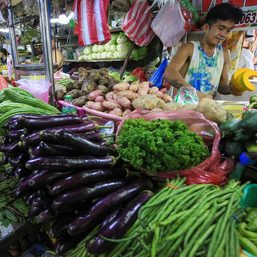SUMMARY
This is AI generated summarization, which may have errors. For context, always refer to the full article.
With both COVID-19 infections and food prices rising, the Philippine economy is “in a worrisome state,” said the research arm of credit rating agency Moody’s on Friday, March 26.
“Elevated inflation, a large output gap, a recent resurgence of COVID-19 infections, and limited vaccine availability are all reasons for concern,” Moody’s Analytics said in a research note.
The Philippines on Friday, March 26, reached a grim milestone as active COVID-19 cases in the country breached the 100,000-mark.
The Department of Health reported a record-high 9,838 new COVID-19 infections on Friday, bringing total cases in the country to 702,856.
Moody’s Analytics warned that the Philippines is in a continued risk of further outbreaks due to the Duterte administration’s slow vaccine rollout efforts.
“Recent reports indicate that the archipelago has so far only received enough vaccines for 1% of the population, with current estimates indicating that the population won’t be fully vaccinated until 2023,” the report said.
As the government struggles to contain the virus, the economic team is struggling to restrain food prices from going up further amid job losses and business closures.
Inflation went up to a two-year high of 4.7% in February, mainly due to food prices rising amid supply constraints and African swine fever.
With the Philippines failing to transition into a more relaxed quarantine measure as COVID-19 infections rise to record-highs, Moody’s Analytics sees the country’s economy growing by 6.3% in 2021, after the 9.5% contraction in 2020.
The forecast is below the government’s estimate of 6.5% to 7.5% gross domestic product growth for this year, but higher than the latest estimate of the World Bank at 5.5%. – Rappler.com
Add a comment
How does this make you feel?


![[Time Trowel] Evolution and the sneakiness of COVID](https://www.rappler.com/tachyon/2024/02/tl-evolution-covid.jpg?resize=257%2C257&crop=455px%2C0px%2C1080px%2C1080px)







There are no comments yet. Add your comment to start the conversation.